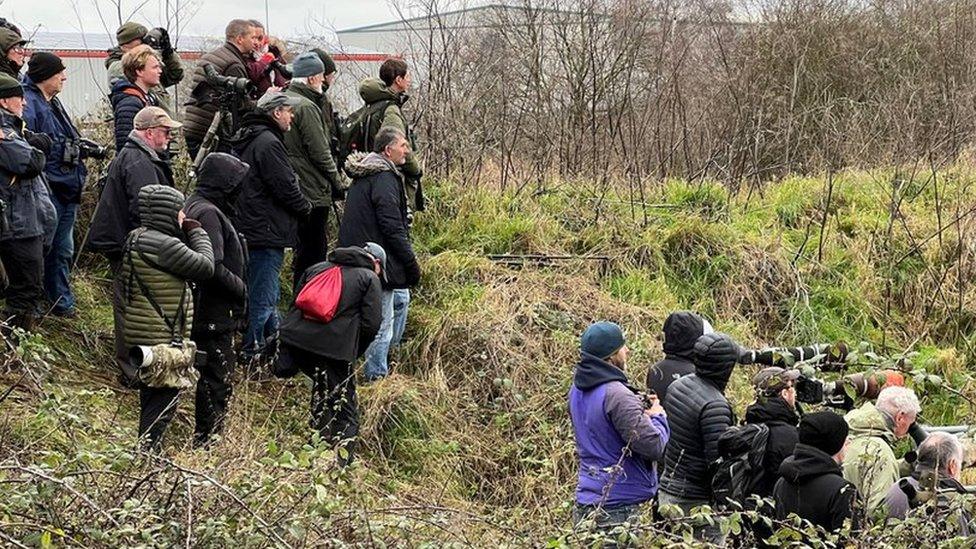New study to look at decline of mallard ducks

Researchers have called on the public to help them with their study about duck populations in the South and East of England
- Published
A team of researchers is asking the public for help in solving the mystery of a decline in local duck populations.
The University of Essex has launched a study to try and find out why the country's winter population of ducks has dropped by an estimated 36% since 1995, external.
The university has asked birdwatchers and nature lovers to send in photos of ducklings in a brood in the wild to help the research.
PhD student Hannah Coburn, who is leading the study, said: "People of any age or expertise can get involved to help us build up a picture of what's happening with ducks in Essex, South East England or indeed UK-wide."
She added: "Information about the number and ages of ducklings, and of older duckling broods in particular is key to understanding how mallards are faring in contemporary Britain."
Despite being a common bird, there was still a "surprising amount" that was unknown about mallard ducks, Ms Coburn said.

A family of mallard ducks pictured at Ferry Meadows, Nene Park, Peterborough
A spokesperson for the university said volunteers can record and photograph ducks at beauty spots, wetlands, city centre ponds and local parks.
Researchers will use GPS tags to investigate how mallards use the landscape during the breeding season.
Nest and brood surveys will take place at Abberton Reservoir, near Colchester, Essex, and the movement of female mallards in the breeding season will also be explored.
Participants have been asked to report the size, age and location of broods so scientists can better understand how many ducklings survive to become fully grown.
For more information about the project people can email ducks@essex.ac.uk.
Get in touch
Do you have a story suggestion for Essex?
Follow Essex news on BBC Sounds, Facebook, external, Instagram, external and X, external.
Related topics
- Published8 January 2024

- Published5 January 2024
